Tournament Park: Before They Built The Rose Bowl
My favorite element of college football is the Rose Bowl. Nothing else compares. As a kid, it was a location and game my Badgers aspired to reach and never did. The latter changed over time, but my view of the Rose Bowl as college football's nirvana remains unchanged. Whatever playoff system we're using this year and beyond may change my view of the Rose Bowl, and that is unfortunate since I am probably too old to find a new favorite aspect of the game, though I'll try.
Part of what I love about the Rose Bowl is the warm weather and beautiful setting, especially as dusk descends on the San Gabriel Mountains.
Eight games were played on New Year's Day in Pasadena before they built Tournament of Roses Stadium, aka the Rose Bowl, which hosted its first game in 1923. Before that, the teams played at a wooden bleacher stadium in Tournament Park, built in the weeks before the 1902 game and expanded after the Tournament of Roses restarted football games in 1916.
Postseason football has undergone many changes over the years, but Pasadena's good citizens created the genre since it was the only ongoing postseason game worth mentioning until the mid-1930s. It all began because Pasadenans had businesses to promote and land to sell, so they figured that a football game featuring a top Eastern team and one from California might attract a crowd to their Tournament of Roses Festival. After Michigan and Stanford agreed to play on New Year's Day 1902, the locals bought subscriptions (think seat licenses) for boxes and reserved seats, providing the seed money to build a stadium. It wasn't much, with wooden stands sitting along one sideline, horses and carriages on the opposite side, and people standing at either end of the field. It wasn't much by today's standards, but it was solid for the times.
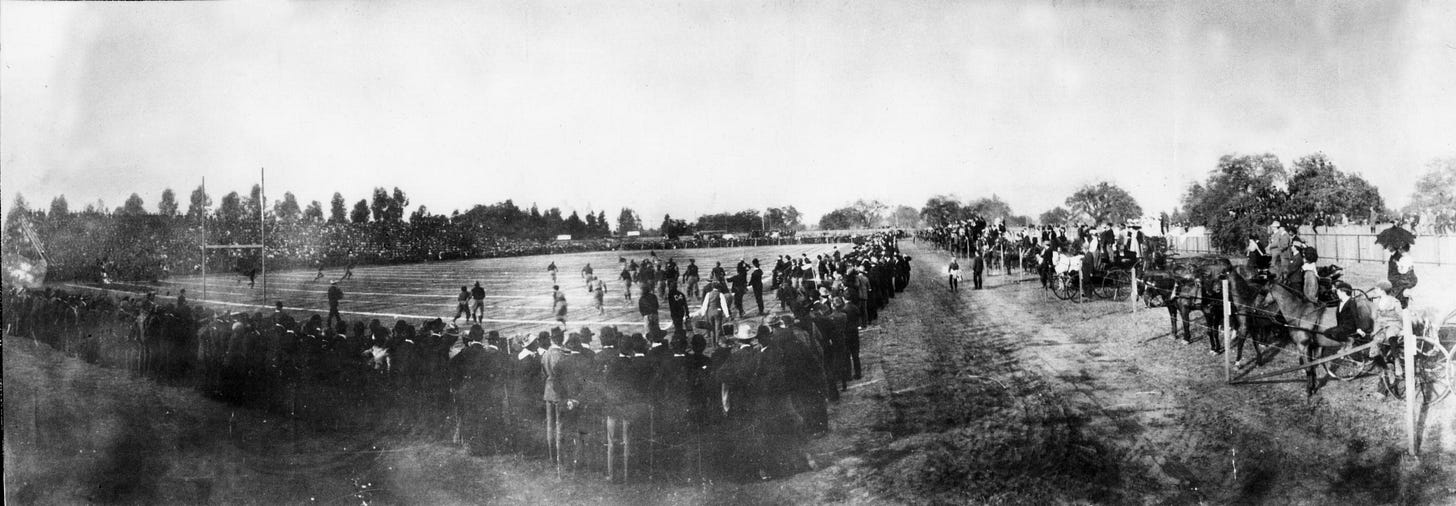
For several reasons, including the debt incurred to build the stadium, they did not have another Tournament football game until 1916, when Brown met Washington State.
Between 1902 and 1916, high school and local college teams used Tournament Park's stadium for football. Still, during the Tournament of Roses festivities, they substituted chariot and ostrich races for football.
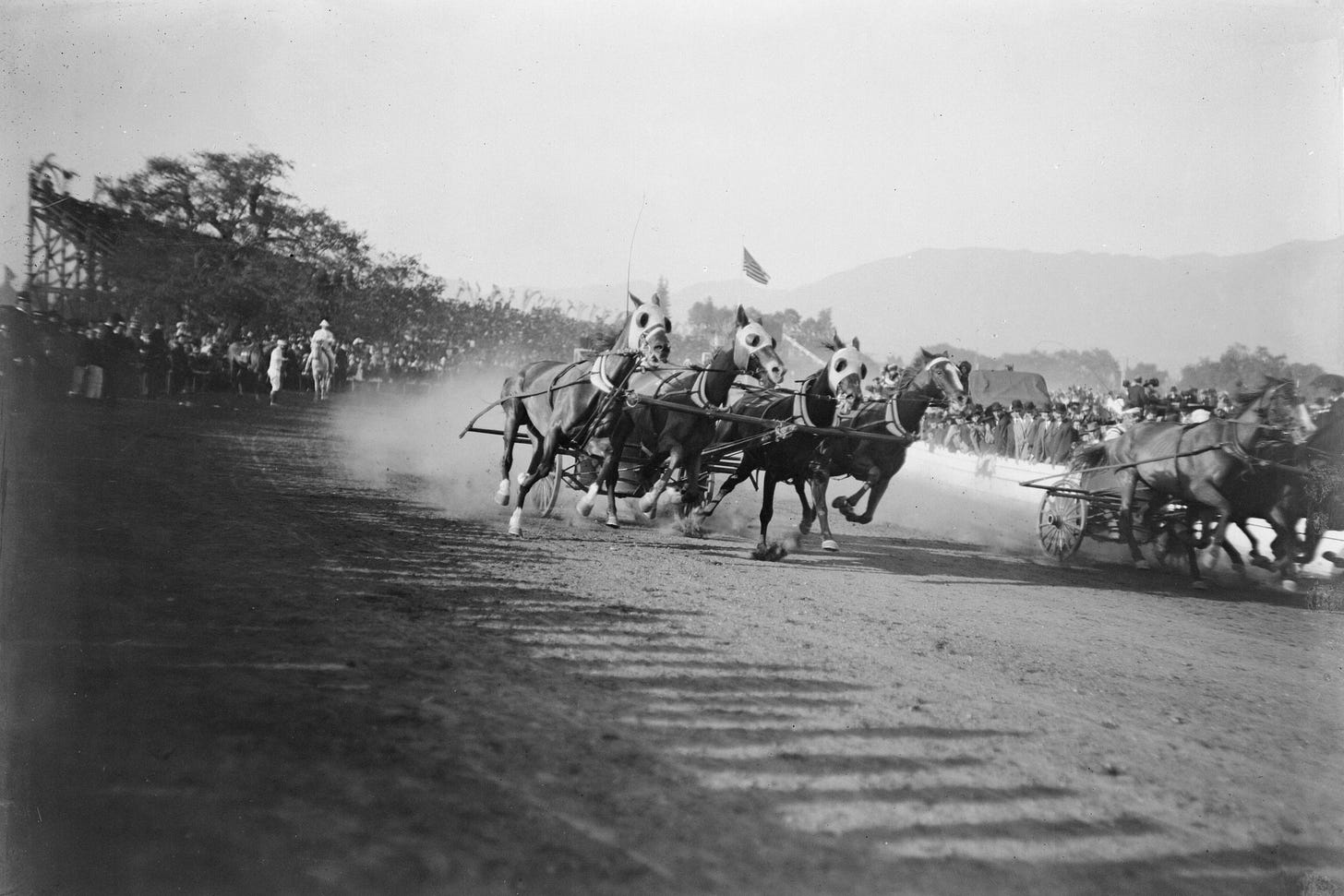
The stands were maintained over the years before being expanded to include stands on both sides and one end to accommodate the 26,000 fans who witnessed the 1917 Penn-Oregon game.
Then came the 1918 and 1919 games, which involved service football teams due to travel and other restrictions, which I covered in my first book, Fields of Friendly Strife.
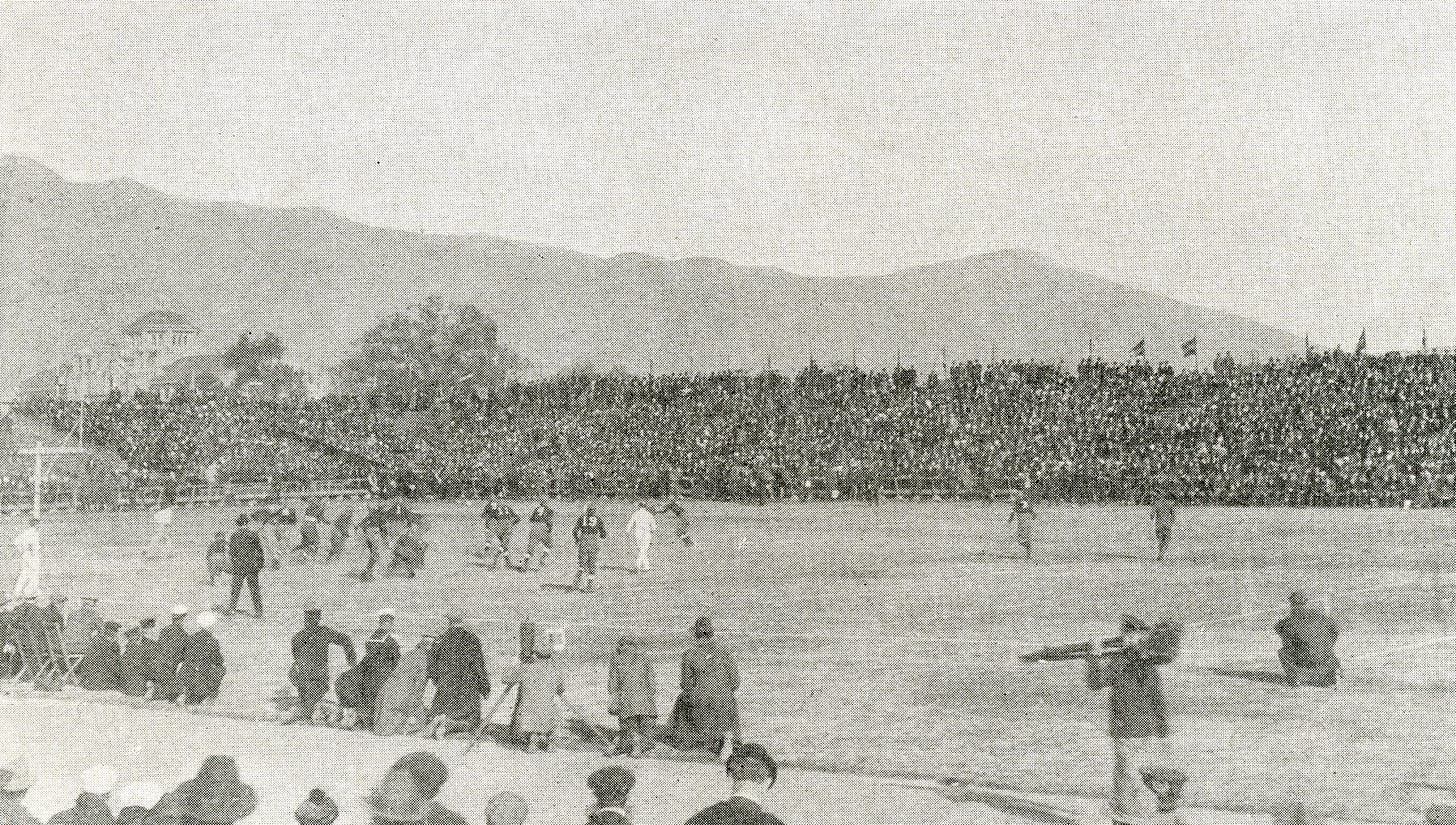
Tournament Park's capacity attracted contests other than those on New Year's Day. USC played a few games there before the Coliseum opened, and the park hosted an annual Armistice Day game between active-duty Army and Navy teams, which filled the joint each year.
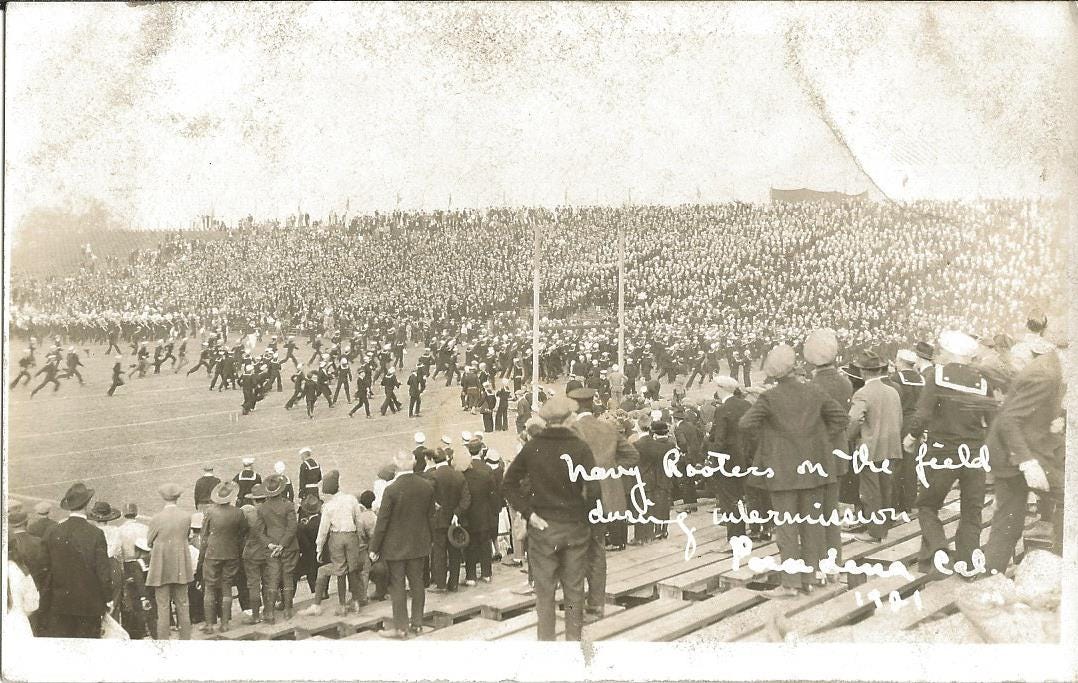
After packing 42,000 into Tournament Park stadium for the 1921 Cal-Ohio State game and 40,000 for the 1922 Cal-Washington & Jefferson games, the Rose Committee bought into the 1920s stadium building boom. It commissioned Tournament of Roses Stadium, nicknamed the Rose Bowl before the 1923 game, though the stadium did not become a bowl until they added stands to the southern end in 1928.

Like many on-campus stadiums that expanded over the years, Rose Bowl Stadium experienced several expansions and now holds 89,702, though 20,000 more squeezed in for the 1973 Rose Bowl.
After 1923, Tournament Park Stadium no longer served its original purpose. It was reduced in size several times and is now the site of Cal Tech's track facility.
Football Archaeology is reader-supported. Consider becoming a paid subscriber or buying one of my books here.
Subscribe for free for limited content or gain full access with a paid subscription.


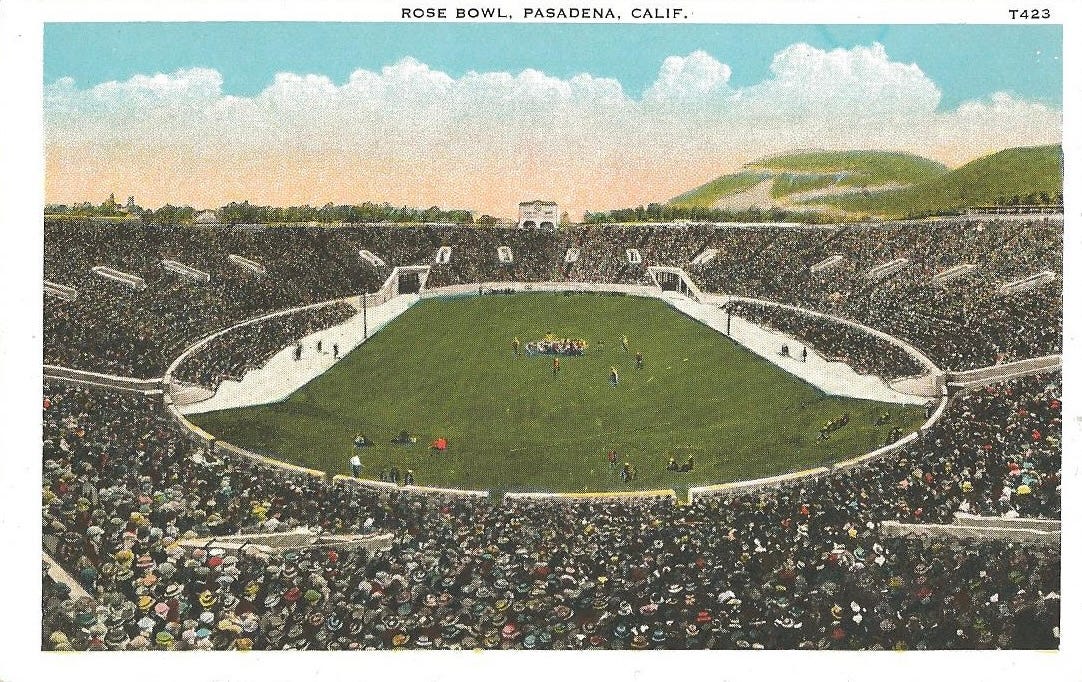

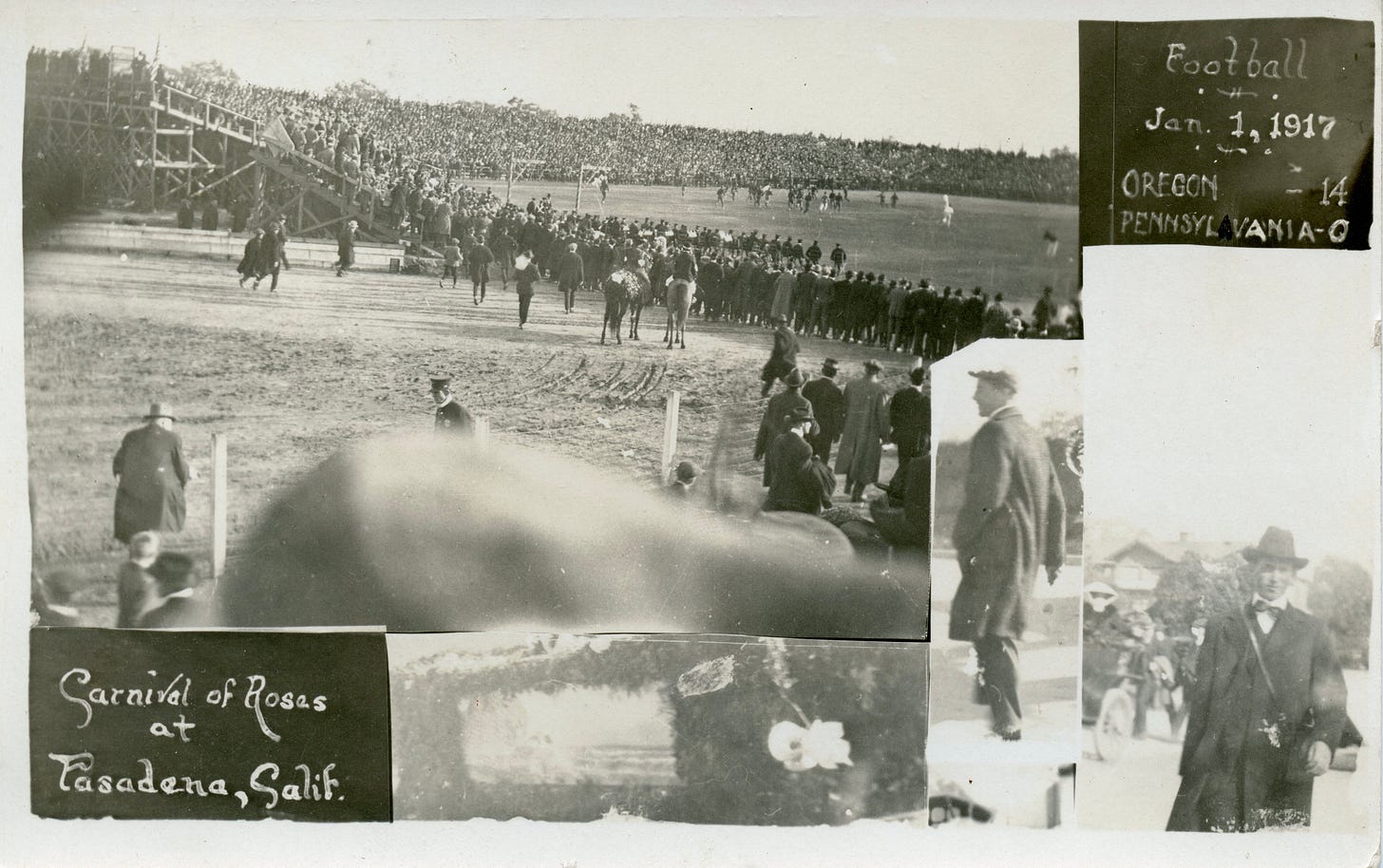
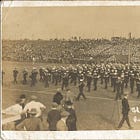
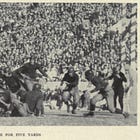

LMK the next time you’re in Pasadena, Tim. I live about a mile from Caltech and we can do a Tournament Park site walk…
Excellent piece.